Top 5 places to visit in Noto
Royal Gate
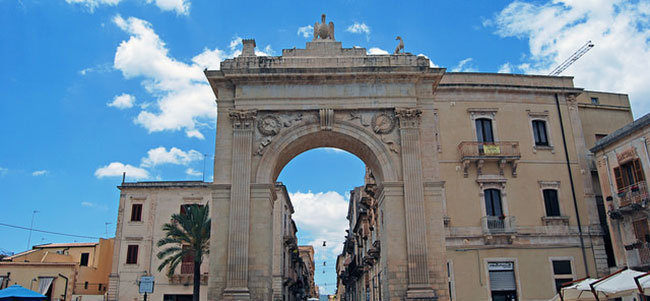
The best way to enter in Noto is pass through the Royal Gate, a monumental entrance in the shape of a triumphal arch at the beginning of Corso Vittorio Emanuele. The style of the Gate is neoclassic (not baroque). It was built, according to the project of architect Orazio Angelini from Naples, in the 19th century (about 1840), on the occasion of the visit of King Ferdinando II of Bourbon.
The Gate has two columns with corinthian capitals, while in the fornix there are two crests, one of the City of Noto and the other of Cannicarao family, which financed and promoted the construction of the Gate. On the top of Royal Gate there are three sculptures: a tower (the symbol of the strength of the City), a pelican (symbol of abnegation of City for the King) and a cirneco (breed of dog original from Sicily and symbol of fidelity).
Ducezio Palace
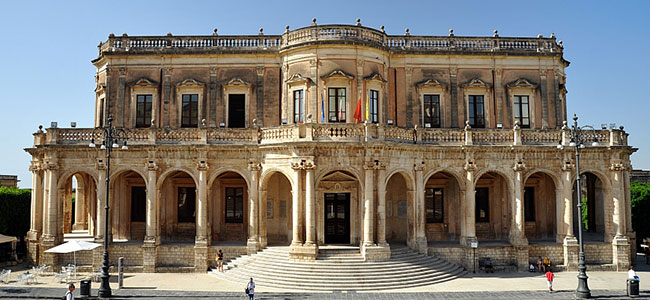
The Ducezio Palace is the seat of the Municipality; the name is from founder of the city, Ducezio. The project (about 1746) was designed by architect Sinatra and the building was accomplished in the 1830. The ground floor has a classical colonnade with arches and ionic columns; the first floor, instead, was built in 1951 and it has an elegant balcony.
Inside the Palace, the Mirrors Room (Sala degli Specchi) is very interesting: thanks the oval shape, it was perfect to perform theatric shows, while today it is the stateroom of the Palace. This room is furnished in Luigi XV style and with large mirrors made by Sebastiano Dugo from Avola. In the vault of the Mirrors Room, Antonio Mazza (XVIII century) painted the foundation of Noto by Ducezio.
Cathedral
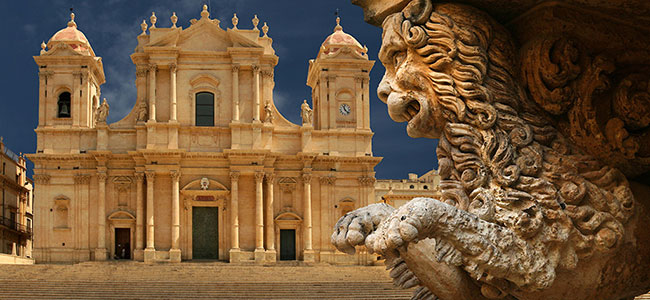
The Cathedral was built in XVIII century and it is dedicated to St. Nicholas. The façade of the building has corinthian columns, statues and two twin bell towers; the Church has a cupola (76 meters high), some chapels and it is divided into three naves. In the Cathedral there are also many works of art and the silver urn containing the rests of St. Corrado Confalonieri.
The earthquake of 13 december 1990 caused structural damages; because of these and of some construction defects the dome collapsed with the right and the central naves (this was an area of 1000 mq) on 13 march 1996. The Church was reopened only in 2007, after a restoration by local workers, while the works for the new pictorial decoration began in 2009. The great fresco on the surface of the dome, representing the Pentecost and painted by the Russian Oleg Supereko, was inaugurated in 2011.
Nicolaci Palace (of Princes of Villadorata)
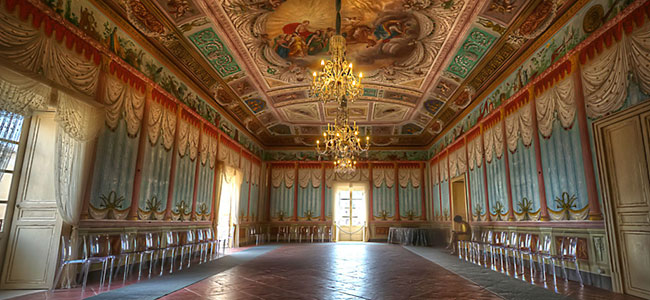
This extraordinary Palace was built in XVIII century. It was the noble urban residence of Nicolaci family (today the family is owner only of a part of the Palace and there lives, while the rest was sold to the Municipality of Noto).
The style of Nicolaci Palace is purely baroque. The outside of the building is characterized by many balconies, by beautiful decorations (e.g. mermaids, sphinxes, hippogriffs and winged horses) and by curved railings. Inside, there are about 90 rooms, and some of these are richly decorated like the Feast Room (Salone delle Feste). In addition, in a part of the ground floor there is the Municipal Library, founded in 1817, which contains also books, volumes and manuscripts (in latin and spanish languages) donated to population of Noto by Prince of Villadorata.
Municipal Theatre Vittorio Emanuele
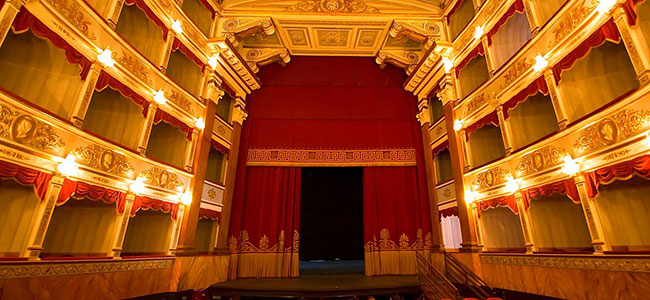
It was inaugurated in 1870 and dedicated to Salvatore La Rosa, the Intendant who has strongly supported the building of it during the most prestigious period of the City (Noto, in fact, became capital – in place of Syracuse – and diocese). But after the death of Vittorio Emanuele (1878) the theatre was dedicated to the King.
The outside of the Palace is in Liberty style, with a great statue in calcareous stone representing the allegory of Music, made by sculptor Giuliano Palazzolo. The Municipal Theatre has 320 seats and a gallery with 80 seats. This building was the center of cultural life in Noto, but then it fell into ruin, and it was restored only after the First World War. And again it was abandoned, until 1958 when the dome broke down. In 1997 it was inaugurated for a second time and regular theatre seasons were started.
